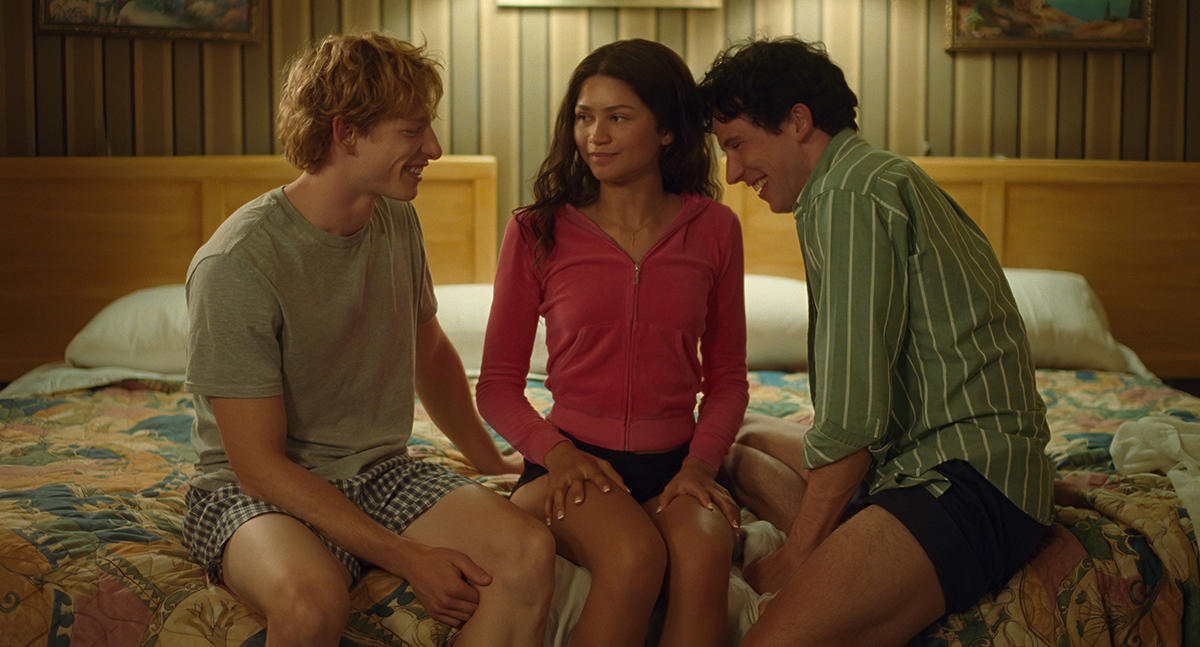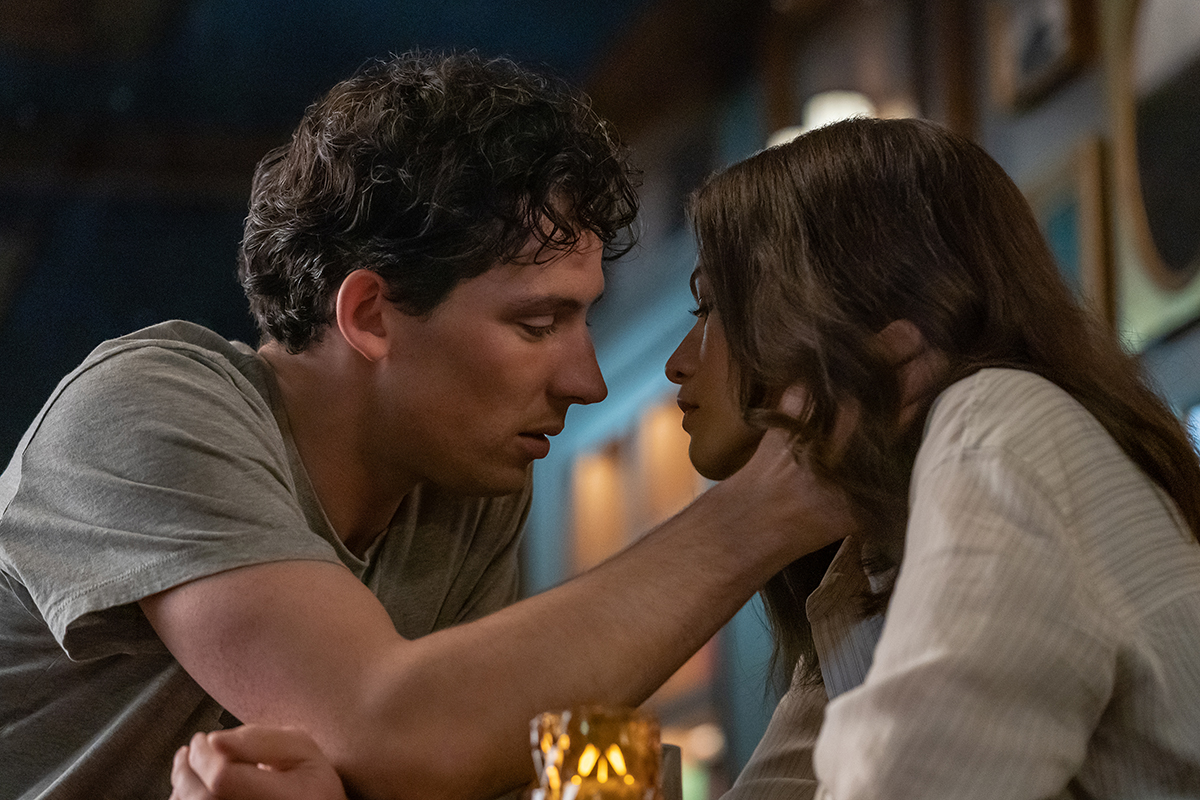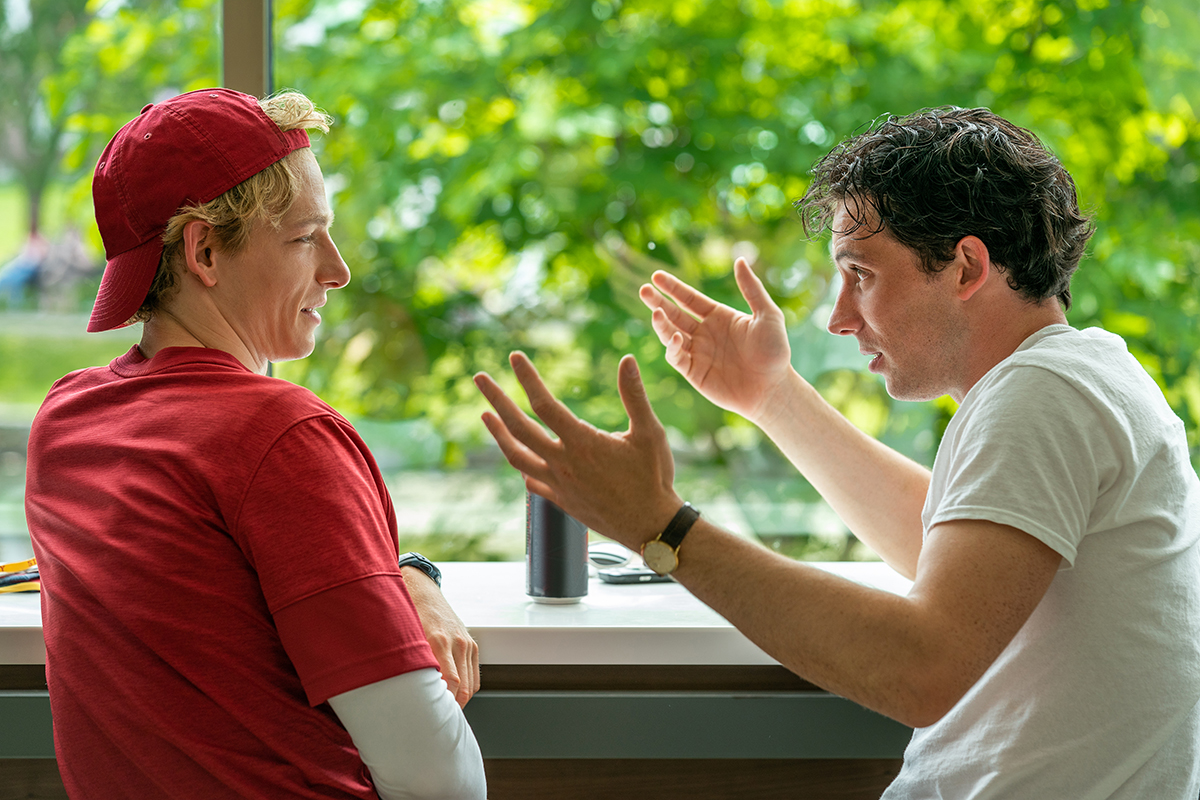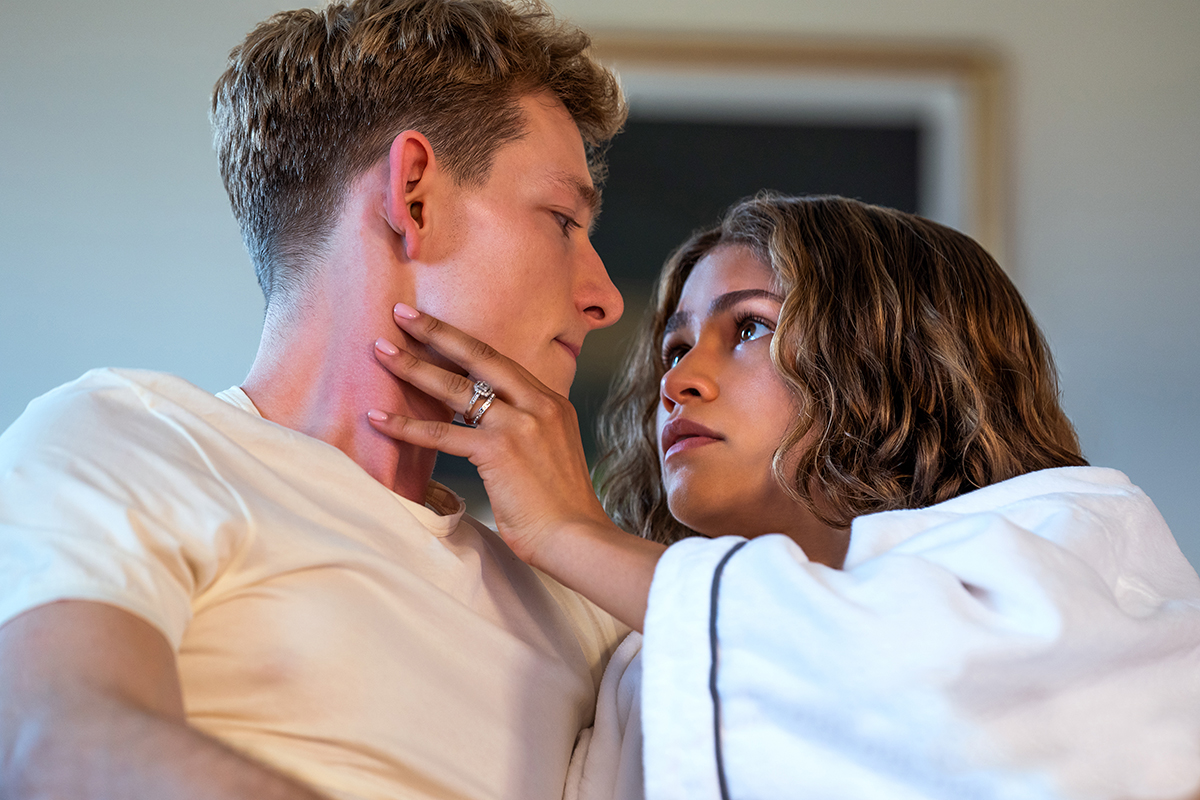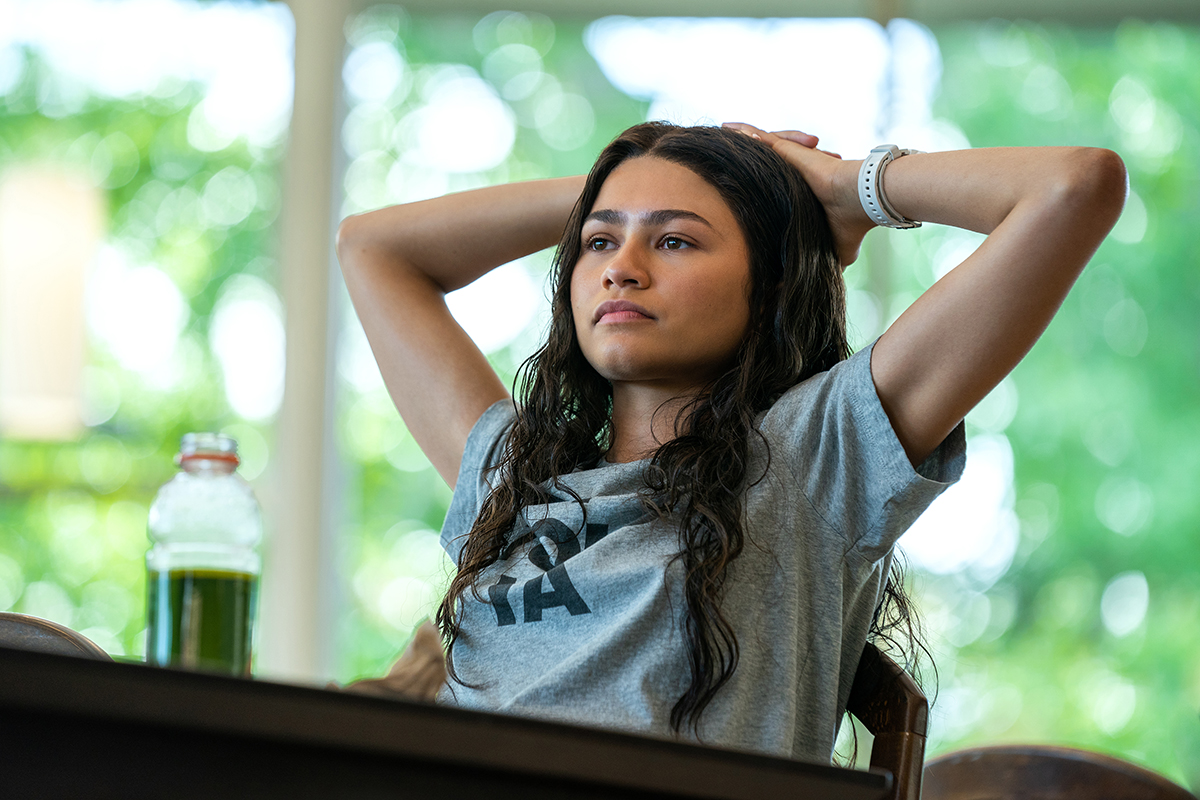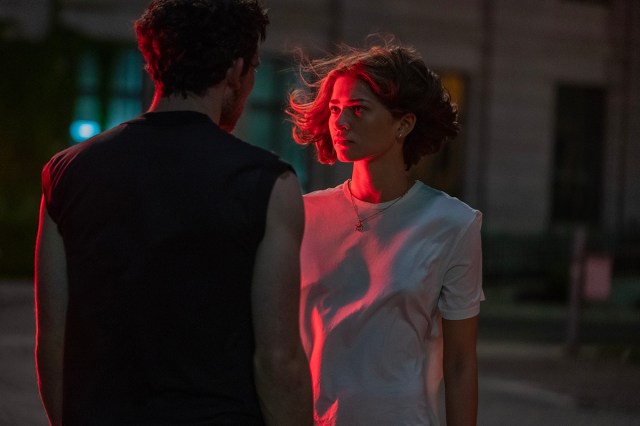
TL;DR
- Luca Guadagnino’s “Challengers” subverts cinematic conventions while leaning heavily on the narrative traditions surrounding the sport. Classic movies also heavily influence the film, which he says has an air of “Old Hollywood.”
- The director doesn’t consider himself a tennis fan, but leverages its metaphors to depict complicated relationships on and off the court, absent the moralizing we have come to expect from sports movies.
- “Challengers” relied on a combination of practical effects and CGI to realize the action in Justin Kuritzkes’s screenplay.
“Challengers” First Look
“Challengers” Director Luca Guadagnino did not want “to make a tennis film,” instead shaping it around the central “high-stakes love triangle,” writes Melena Ryzik.
Conversely, for The Atlantic’s The Atlantic’s Michael Nicholas, “[i]f this is a movie about love or desire or anything else, it’s only by way of tennis.”
But Guadagnino tells the New York Times, he “was completely ignorant” about the sport. Nonetheless, the Zendaya-helmed movie follows notable narrative traditions specific to the sport’s dramatization.
Production on “Challengers”
Nicholas observes that this film “progresses in a way that’s not unlike John McPhee’s 1969 book, ‘Levels of the Game,’ which recounts a single match played between two American players, Arthur Ashe and Clark Graebner, in the semifinals of the 1968 U.S. Open.”
Ryzik also notes that Guadagnino consciously borrowed from the work of French New Wave director and tennis aficionado Jean-Luc Godard; as well as the “invisible match” scene from Michaelangelo Antonioni’s “Blow-Up.” He also references Alfred Hitchcock’s “Strangers on a Train,” which Guadagnino says is “the greatest tennis match seen onscreen.
“You have that amazing shot, that we cheekily homaged, where everyone is looking at the match and the only person who is not looking at the match is the lead.”
Another New York Times Reporter, Kyle Buchanan, interviewed Guadagnino and the film’s stars. The director told him that “[t]he approach of the movie is very old Hollywood, like Preston Sturges, Lubitsch. The leading characters were fierce, feisty, complex, yet fun and seductive.”
To that list, cinematographer Sayombhu Mukdeeprom adds the 1986 Scorsese film “The Color of Money,” drawing on its sense of place and ambience.
Crafting Kinetic and Emotional Sports Cinematography
Guadagnino succeeded in differentiating from other tennis movies through a “kinetic experience” rather than the “static camera positioned behind the player who is serving, or a wide shot of the court” — what Guadagnino termed “televisual stillness.” His camera movements sought to convey emotion, not objectivity, Guadagnino told Ryzik.
The resulting look is “naturalism on overdrive,” full of unique perspectives, according to Ryzik. But that didn’t come without effort: “The tennis proved hard to shoot; the 10-minute finale game took eight months to produce,” she writes.
And that was even with the equipment removed for much of the choreography; Zendaya (Tashi), Mike Faist (Art Donaldson) and Josh O’Connor (Patrick Zweig) held handles (sans paddles) for most of the filming, with the full racket and ball added in post.
The ball POV shot also required CGI, despite many preproduction tests attempting to do otherwise. But some of the more creative perspectives were achieved practically, according to Mukdeeprom. For example, he utilized a platform elevating the players to achieve a shot filmed from below the net.
READ MORE: How They Served the Tennis Scenes in ‘Challengers’ (NYT)
“Challengers” also features an unconventional angle Guadagnino had hoped to deploy for 2018’s “Suspiria:” The final match point is shown with the camera looking up through a kind of a translucent court. Guadagnino told IndieWire’s “Fimmaker Toolkit” podcast, “If it wasn’t going to be dance, it’s going to be tennis.” But utilizing the glass floor seems only to have ignited his curiosity: “I want to use [that glass floor] again. I think it’s an interesting point of view,” he said.
For the director, “the camera had to witness” Tashi, Art and Patrick’s “entanglement” on and off the court with extreme “intimacy.” And not just any camera — IndieWire reports Guadagnino imported a camera utilized for Italian slo-mo commercials in the ’70s and ’80s, capable of 2,000 FPS and resulting in “tons of kilometers of film” for this scene, according to Guadagnino.
Also, to accurately capture the action depicted in Justin Kuritzkes’s screenplay, the director deviated from his usual process and incorporated storyboarding and rehearsals. “I felt the precision of the script and the structure of the script needed to really be very clear and carefully encompassed in the movie,” Guadagnino explained to IndieWire.
READ MORE: ‘Challengers’ Let Luca Guadagnino Grab the ‘Suspiria’ Shot That Got Away (Indie Wire)
Being the Ball
Guadagnino turned to Zero VFX Executive Producer Brian Drewes to pull off that infamous POV scene.
“Seeing the world through the lens of the ball, even in a rough 3D environment, gave us the ability to interactively experiment and find the really cool moments,” Drewes explained in an emailed Q&A for IndieWire. Within two weeks of filming, they had a game plan, to which they remained faithful, he said, aided by an on-set editor who made sure each segment lined up to the previs.
The distinctive pop “of an actual tennis tennis volley” gave the scene credibility, with that audio bed determining the speed of the camera movement. However, “abandoning reality was best when it came to topspin or backspin,” Drewes said.
They shot the scene using an Arri Alexa LF “due to [the scene’s] specific needs” and what Drewes called “a pretty standard 30′ crane.”
Because the 23 segments were shot over a five-hour period while the scene itself is only 24 seconds, the Zero team had to manipulate the lighting in post to appear consistent, in addition to stitching together each cut smoothly. “It definitely hurt my brain,” he said.
Writer Chris O’Falt noted that “full CG takeovers” were necessary “to smooth the camera motion.”
Data gathered from “an extensive LiDar and photogrammetry scan of the court and its environment in a few lighting conditions” enabled the VFX team to create “a detailed, photoreal 3D world” to mesh with the 23 shots and digital spectators, plus “lens distortions” and “visual nuances” to achieve Guadagnino’s full vision.
READ MORE: ‘Be the Ball’: Inside Those Crazy Tennis Ball POV Shots in ‘Challengers’ (IndieWire)
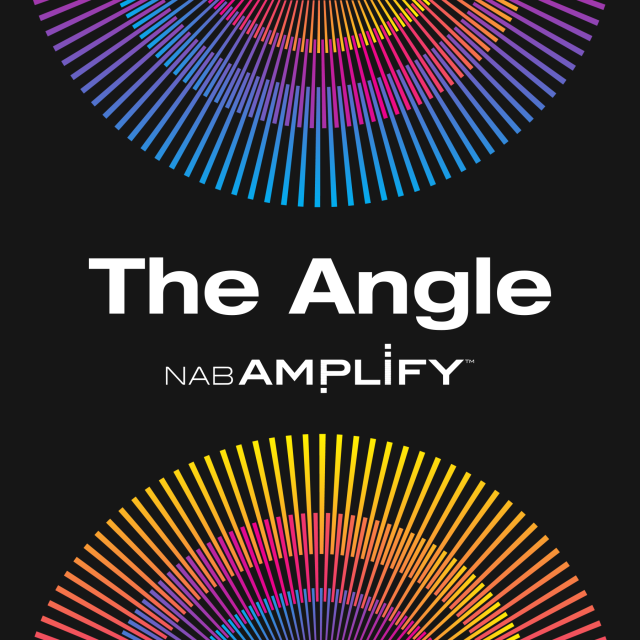
Why subscribe to The Angle?
Exclusive Insights: Get editorial roundups of the cutting-edge content that matters most.
Behind-the-Scenes Access: Peek behind the curtain with in-depth Q&As featuring industry experts and thought leaders.
Unparalleled Access: NAB Amplify is your digital hub for technology, trends, and insights unavailable anywhere else.
Join a community of professionals who are as passionate about the future of film, television, and digital storytelling as you are. Subscribe to The Angle today!


